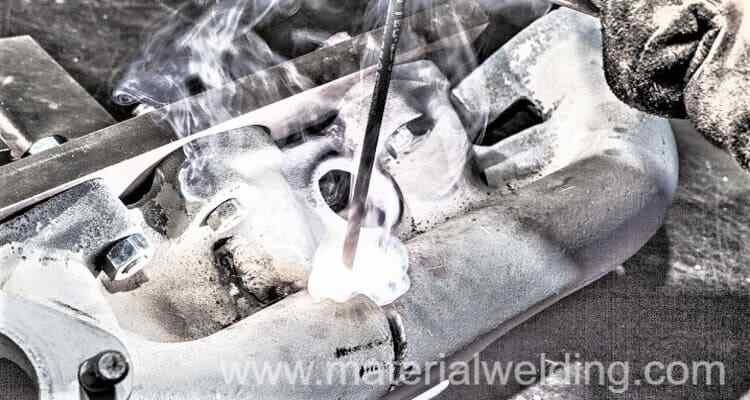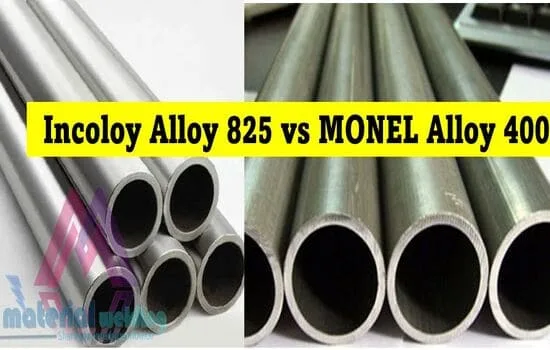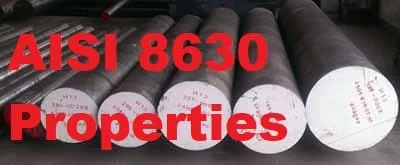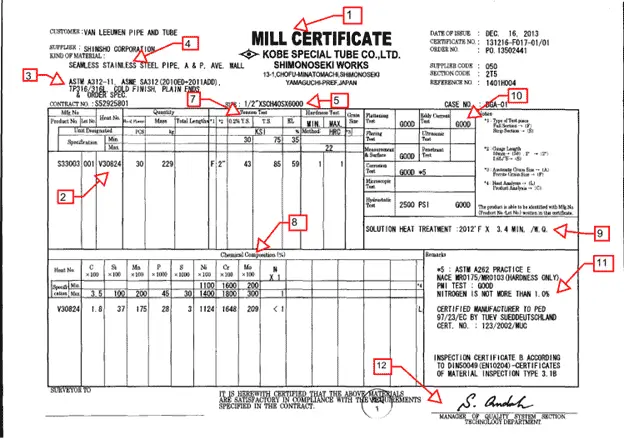Mechanical properties of a Materials
Materials have different properties that make them suitable for different types of applications. When choosing a material for a particular application, it’s important to consider a range of mechanical properties to ensure that the material will be able to meet the demands of the application.
Mechanical properties of materials are the characteristics that determine how a material responds to various types of loads and environments.
These properties are critical in determining how a material will perform in different applications, and are often considered when selecting a material for a specific application.
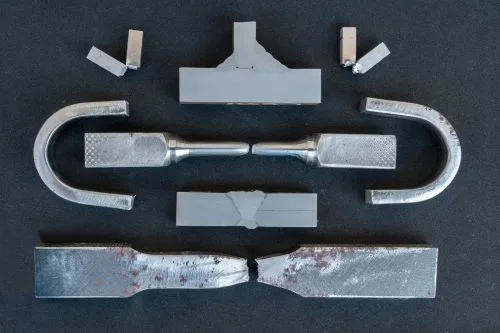
Here are the 10 most important mechanical properties of materials with their units:
1. Tensile Strength of Materials
The tensile strength of a material is a measure of its ability to withstand a pulling force (The amount of stress a material can withstand before breaking). It is typically measured in pounds per square inch (psi) or Mega Pascals (MPa).
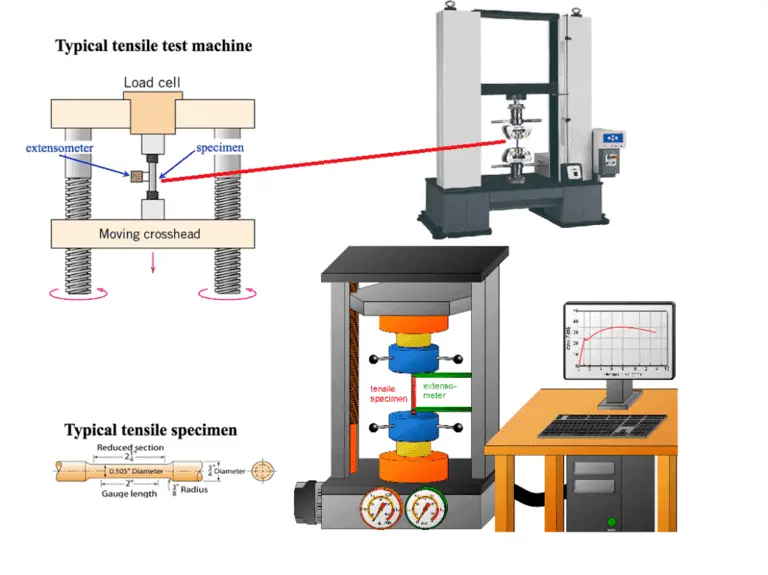
The tensile strength of a material is determined by applying a tensile load to a test specimen and measuring the maximum load the specimen can withstand before breaking using a Tensile Test.
Tensile testing is carried out as per ASTM A370 Standard.
2. Yield Strength of Materials
The amount of stress a material can withstand before it starts to permanently deform (Change from elastic behavior to plastic behavior).
The yield strength of a material is the point at which a material begins to deform plastically (i.e., permanently) when a load is applied.
It is typically measured in pounds per square inch (psi) or Mega Pascals (MPa). This property is important in applications where a material needs to maintain a specific shape under load.
3. Modulus of Elasticity
The modulus of elasticity, also known as the Young’s modulus, is a measure of a material’s ability to withstand a load without deforming permanently.
It is typically measured in pounds per square inch (psi) or Giga Pascals (GPa). The modulus of elasticity is an important property in determining the deflection of a structure under load.
4. Hardness of Materials
The hardness of a material is a measure of its resistance to surface deformation. It can be determined using a variety of test methods, such as Rockwell, Brinell, or Vickers.
Read more: What is Hardness Testing & its Types?
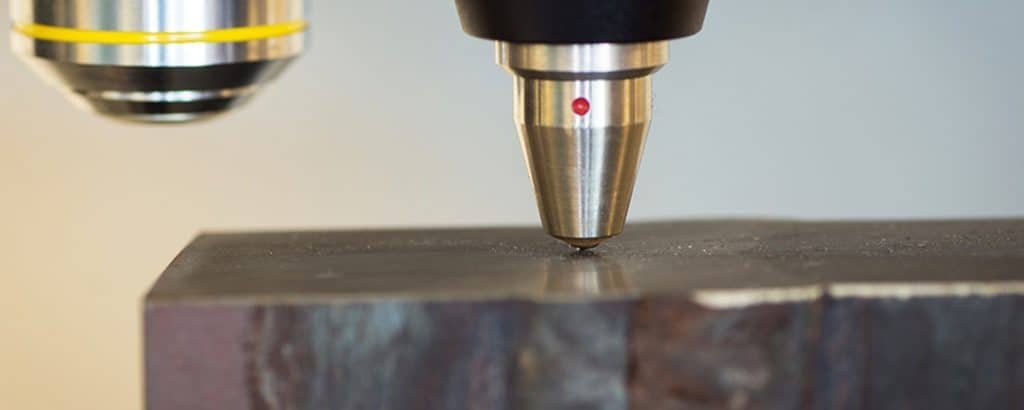
The units of hardness depend on the testing method used. For example, Rockwell hardness is measured in Rockwell units (Rc), and Vickers hardness is measured in Vickers units (HV).
5. Density of Materials
The density of a material is a measure of its mass per unit volume. It is typically measured in grams per cubic centimeter (g/cm3) or pounds per cubic inch (lbs/in3). The density of a material can be used to calculate its weight and can also affect its ability to float or sink in a fluid.
Here is a list of some commonly used engineering materials and their approximate densities:
- Aluminum: 2.7 g/cm3 (0.098 lb/in3)
- Brass: 8.4 g/cm3 (0.302 lb/in3)
- Copper: 8.9 g/cm3 (0.321 lb/in3)
- Iron: 7.87 g/cm3 (0.284 lb/in3)
- Lead: 11.3 g/cm3 (0.407 lb/in3)
- Stainless Steel: 7.9 g/cm3 (0.284 lb/in3)
- Steel: 7.8 g/cm3 (0.281 lb/in3)
- Titanium: 4.5 g/cm3 (0.162 lb/in3)
- Tungsten: 19.3 g/cm3 (0.687 lb/in3)
- Gold: 19.3 g/cm3 (0.68 lb/in3)
- Silver: 10.5 g/cm3 (0.374 lb/in3)
- Concrete: 2.4 g/cm3 to 2.5 g/cm3 (0.087 lb/in3 to 0.090 lb/in3)
- Wood: 0.3 g/cm3 to 0.9 g/cm3 (0.011 lb/in3 to 0.033 lb/in3)
- Plastic: 0.9 g/cm3 to 2 g/cm3 (0.033 lb/in3 to 0.071 lb/in3)
6. Impact Strength of Materials
The impact strength of a material is a measure of its ability to withstand a sudden impact or shock load. It can be determined using a variety of test methods, such as Izod or Charpy impact testing. The units of impact strength depend on the testing method used.
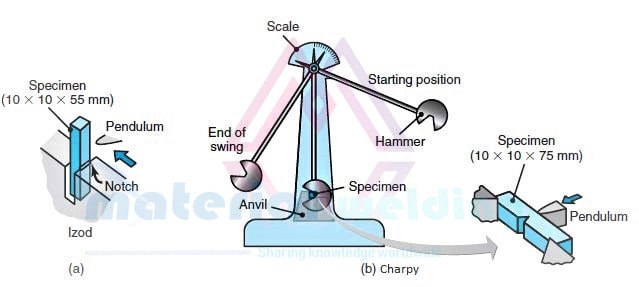
7. Toughness of Materials
The toughness of a material is a measure of its ability to absorb energy before breaking. It can be determined by measuring the area under the stress-strain curve. The units of toughness are typically units of energy, such as joules (J).
It is a measure of the material’s resistance to fracture, and it is an important factor in determining the suitability of a material for certain applications. A tough material can withstand significant loads and impacts before breaking, whereas a brittle material will break with relatively little deformation.
One of the most common methods for measuring the toughness of metallic materials is the Charpy impact test, which measures the amount of energy that a material can absorb before breaking under an impact load. This test is often used to evaluate the toughness of steels and other metallic materials.
For brittle materials, like ceramics, the Izod Impact test is commonly used, this test measures the amount of energy that a material can absorb before breaking under a pendulum-like impact.
8. Fatigue Strength of Materials
The fatigue strength of a material is a measure of its ability to withstand cyclic loading without failing.
It is typically measured in pounds per square inch (psi) or Mega Pascals (MPa). Fatigue strength is an important property in applications where a material will be subject to repeated loading over time.
9. Elongation of Materials
Elongation is the measure of the change in length of a material due to the applied load as a percentage of the original length of the material. This is a measure of how much a material can stretch before breaking and is important in determining the flexibility of a material.
Elongation is a measure of a material’s ability to stretch or extend under an applied load. It is a mechanical property that is used to describe the ductility of a material, which is the amount of deformation that a material can undergo before breaking. Elongation is typically measured as a percentage of the original length of the material, and it is calculated by dividing the amount of deformation by the original length of the material.
The most common method for measuring the elongation of a material is the tensile test. In this test, a sample of the material is stretched until it breaks under a tensile load, and the amount of deformation is measured at various points during the test.
The test provides data about the material’s behavior under the loading, for instance, it provides the stress-strain curve, and the maximum elongation (or strain) that a material can withstand before breaking is known as the ultimate elongation.
It is worth noting that the elongation of a material is also affected by temperature, with most materials having a decrease of elongation as the temperature increases. Additionally, some materials have anisotropic properties, meaning that their elongation can be different in different directions.
10. Creep of Materials
Creep is the rate at which a material changes shape over time when under a constant load. It is typically measured as a strain (deformation) over time, and is often reported as a percentage of the original length of the material.
Creep is an important property in applications where a material will be subject to a constant load over an extended period of time. The unit for this will be ratio (time/length).
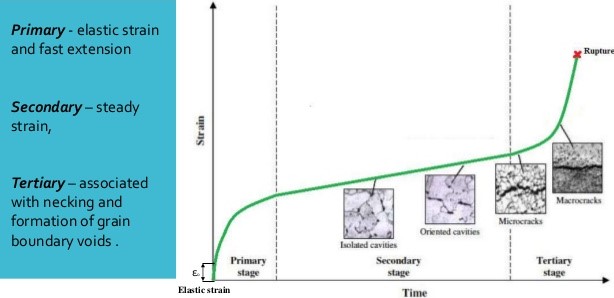
Creep is the gradual deformation of a material over time under a constant load or at a constant temperature. It is a time-dependent deformation and is a phenomenon that affects many materials, including metals, ceramics, and polymers. Creep is a concern in materials that are subjected to long-term loads, as it can lead to failure or decreased performance over time.
The rate of creep depends on the material’s properties, such as the chemical composition, microstructure, and mechanical properties, as well as the temperature, loading conditions, and the duration of the load.
The behavior of creep can be divided into three stages: primary, secondary, and tertiary creep. In the primary creep stage, the deformation rate is high, then it decreases and stabilizes in the secondary stage, until it increases again in the tertiary stage, leading to the failure of the material.
Materials that are subjected to high temperatures, high loads, and long-term loads are more likely to exhibit creep. For instance, in the power generation industry, creep is a concern for the turbine blades, which are exposed to high temperatures and are under high stresses for long periods of time. Similarly, creep is a concern for the structural components of aircraft, as they are exposed to high temperatures during flight.
11. Ductility of Materials
Ductility is a measure of a material’s ability to deform plastically (i.e., permanently) without breaking. It is typically measured as a percentage of the material’s elongation or reduction in area before breaking.
A material with high ductility is able to bend or stretch significantly before breaking, while a material with low ductility will break with little deformation.
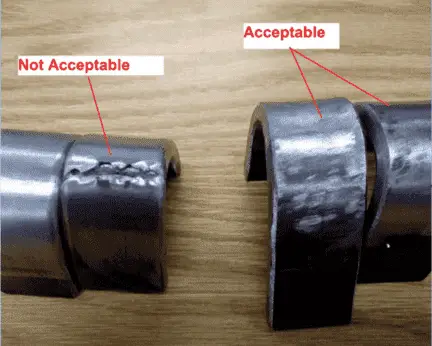
Ductility of the material can be verified using a Bend test. Both ductility and bend test are closely related and are used to determine a material’s ability to withstand deformation and plasticity.
A material with high ductility will typically perform well in a bend test, while a material with low ductility may not.
12. Elasticity of Materials
Elasticity is the ability of a material to return to its original shape after being deformed. When a material is subjected to a force, it will stretch, compress, or bend, and when the force is removed, the material will return to its original shape. This behavior is known as elastic behavior, and the study of this behavior is called elasticity.
In general, materials can be classified into two categories based on their elastic behavior: elastic and plastic. Elastic materials will return to their original shape when the force is removed, whereas plastic materials will not. Most materials are elastic to some degree, and the degree of elasticity can be quantified using a material’s elastic modulus.
The elastic modulus is a measure of a material’s resistance to elastic deformation. It is typically measured in units of force per unit area, such as pounds per square inch (psi) or newtons per square meter (N/m^2). The elastic modulus of a material can be used to predict how much a material will deform under a given load.
There are several types of elastic modulus: Young’s modulus, Shear modulus, Bulk modulus
Young’s modulus is the most commonly used elastic modulus, and it measures the ability of a material to withstand changes in length when under tension or compression. It is calculated as the ratio of longitudinal stress to longitudinal strain.
Shear modulus, also called modulus of rigidity, measures a material’s resistance to shear stress, which occurs when a material is subjected to forces that act parallel to its cross-sectional area.
Bulk modulus measures a material’s resistance to volumetric deformation and it is calculated as the ratio of volumetric stress to volumetric strain.
It’s important to notice that there’s a limit for the amount of stress that a material can handle before it will undergo permanent deformation, this is known as yield strength or breaking strength.
13. Plasticity of Materials
Plasticity is the ability of a material to undergo permanent deformation (or change in shape) when subjected to a force. When a material is elastic, it returns to its original shape when the force is removed. In contrast, when a material is plastic, it does not return to its original shape when the force is removed, and instead retains some degree of deformation.
Plastic deformation occurs when the material is subjected to a force that exceeds its yield strength. The yield strength is the point at which a material begins to deform permanently, and it is typically defined as the stress at which a material experiences a permanent deformation of 0.2% of its original length. Once the yield strength has been exceeded, the material will continue to deform at a constant strain rate, a behavior known as “necking” or “strain hardening”, until the ultimate strength is reached, where the material will fracture.
The ability of a material to undergo plastic deformation is closely related to its ductility. Ductility is a measure of how much a material can be stretched before it breaks, and is commonly expressed as a percentage of the original length. A material that is highly ductile can be stretched significantly without breaking, while a material that is not ductile will break before it can be stretched very much. Metals, such as copper and aluminum, are highly ductile, whereas ceramics and glasses are not ductile at all.
Another parameter to measure plasticity is the Toughness, which measures a materials resistance to fracture when under stress. Toughness is related to both the yield strength and ductility of a material. Materials that have high yield strength and high ductility are considered to be tough.
Plastic behavior can be seen in different types of loading, tension, compression, torsion, and shearing. These behaviors can be modeled and predicted mathematically by using the plasticity theory, which is the branch of continuum mechanics that deals with the behavior of materials that exhibit both elastic and plastic behavior.
14. Resilience of Materials
Resilience is a mechanical property of materials that refers to the ability of a material to absorb energy when it is deformed and then to release that energy when the deformation is removed. Specifically, resilience is the energy that a material can absorb per unit volume before it reaches its elastic limit and begins to undergo plastic deformation. It is a measure of how much energy a material can absorb before it begins to break or become permanently deformed.
The resilience of a material can be measured by performing a stress-strain test. In this test, a sample of the material is loaded up to its elastic limit, and the energy that is absorbed by the material is measured. The amount of energy absorbed by the material per unit volume is called the modulus of resilience. It is typically measured in units of energy per unit volume, such as joules per cubic meter (J/m3).
The modulus of resilience can be used to predict the behavior of a material when it is subjected to a dynamic loading, such as an impact or a vibration. A material with a high modulus of resilience will be able to absorb more energy before it becomes permanently deformed or damaged, and will be able to return to its original shape more quickly after the deformation is removed.
Resilience is closely related to the toughness and strength of the material, but it is not the same as those properties. Toughness is a material’s resistance to fracture, including both elastic and plastic deformation. While strength refers to a material’s ability to withstand an applied force without breaking or deforming permanently. Resilience specifically refers to the ability of a material to absorb and release energy.
Also, it is important to note that the resilience of a material is affected by temperature, with the energy absorbing capacity usually decreases as the temperature increases.
15. Stiffness of Materials
Stiffness is a measure of a material’s resistance to deformation under an applied load. It is a mechanical property that describes how well a material can maintain its shape under an external load, and it is closely related to a material’s modulus of elasticity (or elastic modulus). The stiffer a material is, the more resistant it is to deformation and bending.
In general, materials that are stiffer are stronger, but that is not always the case. A material can be stiff and brittle, meaning that it can withstand large loads, but will easily fracture under impact loads or other types of loading. Also, a material that is stiffer is also less flexible, which can be a disadvantage in some applications where flexibility is desired.
In practical terms, stiffness can have an important role in engineering designs. For example, in a structure or a machine part, using a stiffer material can result in less deformation and thus improved performance, but on the other hand, it can also increase the weight and cost of the structure.
16. Brittleness of Materials
Brittleness is a mechanical property that describes a material’s tendency to fracture or break under applied loads, without significant plastic deformation.
A brittle material is one that is prone to cracking, breaking, or shattering under stress, rather than bending, twisting, or stretching. It is usually characterized by low ductility and low toughness, which means that a brittle material can’t withstand much deformation before it breaks.
The brittleness of a material is generally related to the way its microstructure behaves under loads. Generally, brittle materials are composed of a structure that lacks in plastic deformation ability, like materials that have long-range ordered structures, or materials with a low density of defects or dislocations that can help the material to absorb energy before breaking.
Examples of brittle materials are ceramics and glasses, they are strong under compressive loads but are weak under tensile loads and tend to break or shatter rather than bend or deform.
In engineering practice, brittleness can be a significant problem in situations where a material is subjected to impact loads, dynamic loads, or thermal loads, as the material is more likely to fracture or break under these conditions. The brittleness of a material is also an important factor in determining its suitability for certain applications, and it’s often a trade-off between strength and ductility.
17. Weldability of Materials
Weldability is a measure of how easily a material can be welded, and how well the welded joint will perform. It is a measure of the suitability of a material for welding, and it depends on several factors, including the chemical composition, microstructure, and mechanical properties of the material.
Some materials are highly weldable and can be easily joined using a variety of welding techniques, while others are not weldable at all or are very difficult to weld. For example, metals such as steel and aluminum are highly weldable, while ceramics and glasses are not weldable at all.
The chemical composition of a material affects its weldability, as certain elements can cause problems during welding. For example, sulfur, phosphorus, and lead can make a material more brittle and can cause cracking during welding. Similarly, high levels of oxygen and nitrogen can also cause cracking during welding. The presence of certain impurities can also affect the properties of the welded joint, and can make it more prone to failure.
The microstructure of a material also plays an important role in its weldability. Materials with a fine-grained microstructure, for example, are often easier to weld than materials with a coarse-grained microstructure.
The mechanical properties of a material also affect its weldability. Materials that are brittle or that have a low ductility are often more difficult to weld than materials that are more flexible or ductile. For instance, welding a high-strength steel can be more challenging than welding a low-strength steel because of its hardening behavior.

